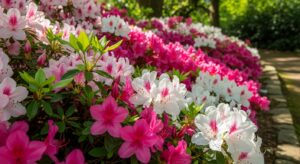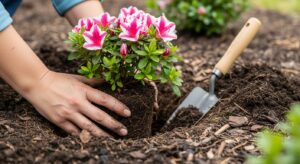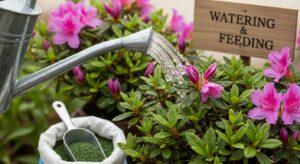When it comes to adding vibrant color and life to your landscape, few plants rival the charm of the azalea.
With their lush foliage and brilliant blooms, azaleas have long been favorites among garden enthusiasts. Whether you’re cultivating a peaceful shade garden, designing a lively front yard, or simply seeking a low-maintenance plant that delivers high visual impact, these flowering shrubs never disappoint.
In this article, we’ll explore essential tips for growing, caring for, and showcasing azaleas so they thrive year after year.
1. Understanding the Azalea Family

Azaleas belong to the Rhododendron genus, and they come in both evergreen and deciduous varieties. They’re known for their breathtaking clusters of flowers that range from soft pastels to fiery reds and pinks.
Most azaleas prefer partial shade, making them perfect for gardens that receive dappled sunlight through trees. Their adaptability allows them to fit into almost any garden design, from cottage gardens to formal landscapes.
2. Choosing the Right Location

Location is everything when it comes to planting azaleas. These shrubs thrive in spots that provide morning sunlight and afternoon shade — too much direct sun can scorch their delicate leaves, while full shade can reduce blooming.
They also prefer slightly acidic soil (pH 5.0–6.0), so test your soil before planting. Raised beds or containers are excellent choices for controlling soil conditions if your native soil isn’t ideal.
3. Planting Azaleas the Right Way

Proper planting sets the foundation for healthy growth. Dig a hole twice as wide as the root ball but not deeper — azaleas have shallow roots that prefer to stay near the surface.
After placing the plant, fill the hole with a mix of garden soil, compost, and pine bark to improve drainage. Water thoroughly and add mulch to help retain moisture and regulate soil temperature.
4. Watering and Feeding for Strong Blooms

Azaleas love consistent moisture but dislike soggy conditions. Water deeply once or twice a week, especially during dry periods. Mulching helps keep the soil cool and prevents evaporation.
For fertilizer, choose one specifically formulated for acid-loving plants. Apply it in spring after blooming to encourage lush foliage and next year’s flower buds.
5. Pruning and Maintenance

Minimal pruning is best. Remove dead or crossing branches right after the blooming season to maintain shape without cutting off next year’s buds.
Evergreen varieties can benefit from light shaping, while deciduous azaleas often need little more than occasional cleanup. Regular maintenance keeps your plant healthy, airy, and vibrant.
6. Azaleas in Landscape Design

Few plants offer as much versatility in landscaping as the azalea. Use them as foundation shrubs, border accents, or vibrant focal points beneath taller trees. For layered designs, pair them with hostas, ferns, or hydrangeas to create contrast and texture. Their springtime blooms provide a burst of color that complements nearly any garden style.
7. Common Issues and How to Prevent Them

While azaleas are hardy, they can face issues like lace bug damage, root rot, or chlorosis (yellowing leaves due to poor soil pH). To prevent problems:
-
Keep soil slightly acidic and well-drained.
-
Avoid overwatering.
-
Inspect leaves regularly for pests and treat with horticultural oil if necessary.
Healthy azaleas reward your care with an abundance of blooms each season.
Final Thoughts
Adding an azalea to your garden is like painting it with nature’s brightest palette. Their long-lasting blooms and graceful foliage make them timeless favorites for gardeners of all skill levels.
With the right soil, light, and care, your azaleas will thrive for decades — transforming your garden into a haven of color and calm.